The Different Types Of Tacos In Mexico: A Beginner's Guide
MEXICO2 March 2023
The Different Types Of Tacos in Mexico: A Beginner’s Guide
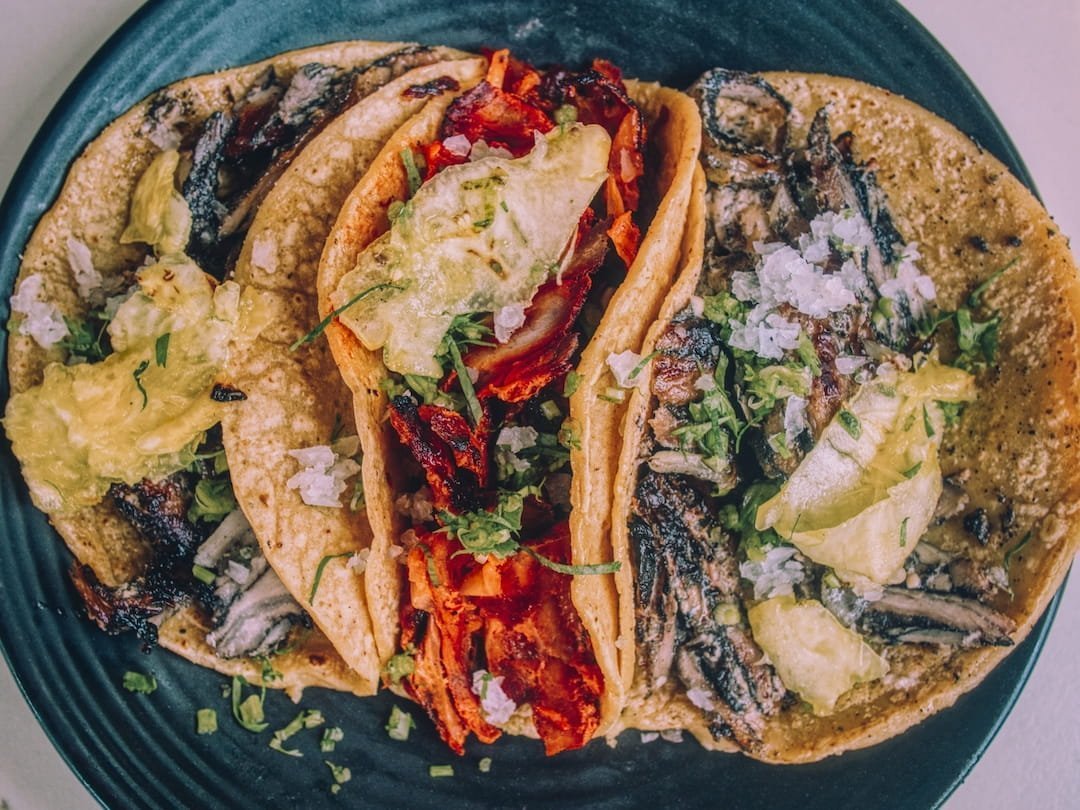
With so many different types of tacos to choose from, knowing what to look for on a trip to Mexico can be a daunting task for any first-timer.
We found ourselves in that exact position when we first arrived in the country. Sure, we knew what al pastor looked like. And we could happily order a chorizo filling without a care in the world. But suadero? Arrachero? Huitlacoche? Our solution was a simple one. Just work our way through each and every one.
In truth, we obsessed over them. We even planned our days around them. They became our comfort food of choice – whether for breakfast, lunch or dinner. We ate them at taco restaurants (taquerias) and at food stalls on the street. We had them griddled, fried, steamed and bathed in chile sauce.
There were probably healthier food choices around, for sure. And they were no doubt lovely in their own way. But, for us, munching our way through a tastebud-satisfying stuffed taco or two won hands down every time.
Suffice to say, we’d have to consider the humble taco as one of the world’s greatest culinary inventions. Indeed, the marriage of a soft, warm (usually corn) tortilla with any number of meat, fish or vegetable fillings and topped off with a crunchy cabbage salad, creamy avocado, fragrant coriander leaf, fiery salsa and a squeeze of lime is one that must surely have been made in heaven.
Happily, if you don’t have the time (nor the inclination) to work your way through every variation yourself, our handy guide to the many types of Mexican tacos might help you make a more informed choice.
Photo by Amy Farías
Table of Contents
Click on the link to go straight there…
Taco vs tortilla – what’s the difference?
PORK
BEEF
GOAT
CHICKEN
SEAFOOD
STEWS
This page contains affiliate links. To help us maintain our site we work with a number of partners who we’ve personally used and can recommend to our readers. If you decide to purchase any products through the links on this page, we’ll receive a small commission at no extra cost to you.
Taco vs tortilla – what’s the difference?
Just to clear up any potential confusion at the outset, the base ingredient of a taco is the extremely versatile tortilla. It’s cooked from a dough of hominy (dried corn) or wheat flour (depending on the region) on a hot iron griddle (or comal).
It can be cooked like a thick pancake, then split down the middle and filled – when it becomes a gordita. Or it can be cooked thinly and fried to become a tostada. Alternatively, a large flour tortilla can be completely wrapped around its filling to become a burrito. On the other hand, a quesadilla is filled with cheese while its on the griddle.
Corn tortillas come in a variety of colours – typically white, yellow or blue, depending on the type of maize flour used.
Regional variations abound, too. A favourite of ours is the panucho, from Yucatan – a fried tortilla stuffed with refried black beans, topped with pulled meat, pickled red onion, avocado, habanero salsa and a squeeze of lime.
But a taco is when the basic tortilla is merely topped with a filling and garnish, then folded in the hand before being eaten with a flourish.
Blue corn tortillas being cooked on a hot “comal”
How to tackle a taco
As lead taco taster, Ian’s early forays were notably amateurish, clumsily allowing the fruits of his taco building to decorate his chin rather than trouble his tastebuds. But, once he mastered the art, he never looked back.
Firstly, even if you’re within the formal setting of a fine dining eatery, a taco should always be eaten by hand. Actually, between your three middle fingers and your thumb, to be precise.
Once held firmly within your grip, don’t be tempted to dive straight in. In fact, if it’s your first time, perhaps take a cue from a nearby local. If you do, you’ll notice that it’s not eaten length first, like a hot dog, but rather from the side. So you’ll need to tilt your head, adjust the angle of taco entry and then just go for it.
Pro tip: it’s considered poor form to take a bite at one end and then the opposite end, saving the middle section for last. Once you’ve chosen your point of entry, carry on through in a linear fashion – typically in just three bites.
You’ll inevitably spill some of your filling on to your plate. Nothing to be embarrassed about. Just scoop it up and add it to your next filling. Over time you’ll undoubtedly perfect your technique. Although, if you’re like Ian, you’ll probably devour your own body weight in tacos before you’re satisfied with it.
Ian, back when he was an amateur – note the overly cautious two-handed approach
Different types of tacos
And so, after all this introductory nonsense, we finally get on to the main purpose of this article – the multitude of different types of tacos you’ll come across on your trip to Mexico. First off, the meat classics.
Although we’ve separated the variations into specific meats, they are sometimes interchangeable. Maybe because of the accessibility of certain types of meat in different regions. Other times because of tradition. For instance, barbacoa is normally cooked with beef or baby goat in northern Mexico, lamb or goat in the central highlands and chicken or pork in the south.
Pork
Al pastor
Inspired by Middle Eastern immigrants and their shawarma dishes, al pastor is thinly cut and spiced pork, stacked on a vertical rotisserie and grilled beside an open flame.
Very popular in Mexico City, it’s first marinated in a sauce of red chillies and achiote paste (made from annatto seeds and used to provide both taste and a burnt orange colour). After cooking it’s usually garnished with chopped raw onion, coriander and pineapple. And, as such, it’s often the introductory taco for the first-time visitor to Mexico.
A variation that we love is al pastor el negro. Originating from Yucatan, the meat is marinated in a black mole sauce made from the charred skins of roasted chillies.
Another variation is adobade, which is marinated in red chilli and vinegar and then grilled rather than hung on a rotisserie.
Al pastor meat being carved
Al Pastor on a blue corn taco
Carnitas
Originating from Michoacan state, carnitas is essentially pieces of heavily seasoned pork shoulder slowly cooked in its own fat (or lard) confit-style, until it’s tender enough to be chopped into small pieces with a cleaver. That is, after the heat has been turned up to eleven in the final stage to achieve the crispy texture so beloved of carnitas addicts. Of which there are many!
In fact, a feature of our visit to Patzcuaro, in Michoacan, was the sight of lines of people queuing for their weekly supply of cooked carnitas meat to use at home.
Suadero
Another fat-rich dish, suadero can also be made with beef. Once again fried in lard, it’s sometimes cooked with chorizo and onions, too. Notable for its reputation as the perfect hangover cure. Which is why many of its purveyors in Mexico City remain open until well into the early hours to satiate the appetite of late night revellers.
Chorizo
One of our favourites, the trusted chorizo taco never fails to satisfy. Spanish cured sausage, seasoned with smoky paprika, is grilled, chopped and topped off with the requisite onion, coriander, chilli salsa and lime.
Longanzina is similar to chorizo but is uncured and minced.
Cochinita Pibil
A Yucatecan speciality, this dish dates back to Mayan times when a whole pig would be marinated and slowly roasted in an underground pit.
Traditionally, the meat is first marinated and tenderised in bitter Seville orange juice and achiote paste. It’s then wrapped in banana leaf and slow roasted underground in an earth oven called a pib.
For authenticity, the meat should always be suckling pig (cochinita literally means “baby pig”) and it should always be pib-cooked. But nowadays, if it’s cooked that way, it’s usually advertised as such.
Either way, it should be in the form of pulled meat accompanied by a rich broth. Make sure it’s served in true Yucatecan style with pickled red onion, coriander and fiery habanero salsa.
Cochinita Pibil
Beef
Carne asada
Originating from Sonora state, carne asada (meaning “roasted meat”) is your original cut of marinated skirt or flank steak, seared and charred on a hot grill. It’s then sliced thinly when served on a taco.
As a variation, taco al carbon is carne asada’s smokier cousin, cooked over charcoal.
Either way, the intense heat produces a crispy charred exterior and a tender, juicy inside.
Arrachera
A muscle that forms the diaphragm of a cow, arrachera needs plenty of tenderising. Its name, therefore, relates to the cut of meat rather than the cooking process. Usually cooked thinly sliced and rare, it’s a prized taco filling from northern Mexico.
Bistec
Thinly sliced meat cooked in a flat iron pan (and therefore not roasted) is called bistec. So simple is this to produce that it invariably turns up at roadside taco stands where there’s more than one type of meat filling on offer.
Goat
Barbacoa
Barbacoa is a pre-Hispanic term referring to a cooking method whereby meat is wrapped with banana or maguey leaves and cooked for hours in an underground hole, surrounded by wooden embers and hot stones. Cooking doesn’t get more basic than that. Nor the meat more delicious.
And you won’t be surprised to hear that it’s where the modern-day term “barbecue” originates from.
Not all barbacoa cooks have access to a handy hole in the ground so the meat is often slow-cooked over an open fire instead. The resultant meat is so tender, soft and moist that it works perfectly as a taco filling.
Birria
Birria is Jalisco state’s signature dish – and is especially associated with the state’s capital, Guadalajara.
Marinaded for hours in a paste (adobo) made from a variety of dried chillies, together with herbs, spices and vinegar, it’s then slowly cooked in a sealed pot. When served as a taco, some of the leftover juices are also provided as a broth on the side. But we prefer it when the tortillas are dipped in the juices and refried on the comal.
It’s easy to spot a restaurant or street stall selling birria as they’re identified as birrierias.
Birria tacos – bathed in consomme and fried
Chicken
Tinga
Chicken can be used a substitute for many of the red meat-based tacos. But in Puebla, the tinga taco is made solely with shredded chicken braised in a mildish sauce.
Seafood
Camarones
The mighty shrimp (or prawn) taco might just be our overall favourite. Especially when coated in a crunchy coconut crust, like the ones we had at Fish Tacos Santo Chilote in Todos Santos, Baja California Sur.
In truth, the varieties are endless. For instance, taco gobernador (named, for some reason, after the governor of Sinaloa state) is first filled with shrimp, cheese, onion, coriander and tomatoes, then folded and buttered before finishing on a hot grill.
And camaron al pastor involves marinating the shrimp in achiote before sautéing.
The shrimp tacos we had at Tiki Santos Bar (Todos Santos, again) came served with a fabulously charred habanero salsa and guacamole.
Tacos camarones (prawn or shrimp)
Pescado
Ah, the fish taco! We first got acquainted with this beauty during our two-month stay in Baja California Sur.
Lightly battered (almost tempura-style) small fillets of white fish caught that day, deep fried and served on a corn tortilla with shredded cabbage, pico de gallo and sour cream. Together with a squeeze of lime, naturally. So simple but delicious.
An alternative to the Baja version is the fish zarandeado taco from Sinaloa state. This time the fish is marinated (including soy sauce) and grilled rather than deep-fried.
Tacos camarones (prawn or shrimp)
Non-meat
Of course, although the most famous tacos are those of the meat and fish variety, there are also plenty of vegetarian alternatives, too. In fact almost any vegetable that can be sautéed, baked or grilled can be used.
In Mexico, diced nopales (the flat stems of the prickly pear cactus) are sautéed and combined with queso fresco (a kind of cottage cheese), onions, coriander, salsa and lime juice to create your very own cactus taco.
Although not quite a vegetable, huitlacoche is a corn fungus (also known as corn smut), and something of a delicacy in central Mexico. Fried in butter – along with garlic and chopped onion – it transforms into an earthy mushroom-flavoured taco filling. Once we tried them we couldn’t resist them. We even made them ourselves.
And how about deep-fried avocado, covered in panko breadcrumbs – crunchy on the outside, soft and velvety in the centre? Believe us, with a habanero salsa and plenty of lime, it’s worth every calorie.
Taco filled with huitlacoche, roasted red pepper, cheese and avocado
Stews
Guisado
If tacos define inexpensive street food in Mexico, then tacos de guisado are the best value of all.
Translating as “stew”, the combination of foods is as endless as the varieties of regional dishes across the country. Essentially, it’s home cooking taken to the street in the form of a taco. You’ll spot them in taquerias where a bubbling cazuela (clay pot) or two are on display. Especially in Mexico City where they vie with the mighty al pastor as the city’s taco of choice.
Alternative fillings
OK, so far we’ve played it fairly safe. Unless you don’t eat meat there’s been nothing we’ve covered thus far to raise the hairs on the back of your neck. However, Mexicans do have an adventurous side to their eating habits. Not all of which is particularly healthy.
However, we keep hearing that chapulines (dried and toasted grasshoppers) are the protein replacements of the future. Seasoned with garlic, chilli and lime juice they’re probably one of the healthiest tacos around. Although we still wouldn’t choose one over a taco filled with lashings of chorizo.
Considerably less healthy are tacos de chicharron – filled with deep-fried pig belly skin. You might feel more pleased with yourself when you pop a little raw chopped onion, coriander and squeezed lime on top. But, we kid you not, one is probably more than enough.
Which, to be fair, is probably one more than a taco de cabeza (braised cow’s head) or trompa (steamed lips). You’ll probably have to seek them out rather than stumble upon them. But you WILL come across plenty of street and market stalls selling tacos de tripa – crispy, grilled intestines.
Although you might smell them before you see them.
Crispy chicharron on an otherwise meaty taco
Taco variations
The different types of tacos on offer in Mexico are not just restricted to the huge variety of fillings. How the tacos are cooked also varies from region to region.
One of our favourite variants is the taco al vapor, which is brushed with ancho chile sauce, fried and then steamed. When bought at a street stall, the tacos are typically pre-cooked and kept warm in large metallic canisters before being reheated on a comal.
The best ones we had in Mexico were for breakfast during our two-month stay in Guanajuato at a street stall called Tacos al Valpor el Jaguar. For 10 pesos each (£0.40 / $0.50) we had several of them filled with choriqueso (a mixture of chorizo sausage and cheese), topped with coleslaw, avocado, onions, coriander and habanero salsa from the salad bar. Suffice to say, we did what the locals did and ate them all with a plastic spoon.
Tacos al Vapor steaming
The 3 best tacos we’ve ever eaten
If we were to choose the best tacos in Mexico based on our own experience, we’d have to go for the following three superb examples. And so, in no particular order…
Plato Combinado @ Tacos Don Felix, San Miguel de Allende
A town that’s recognised as a UNESCO Word Heritage Site, San Miguel de Allende is full of upmarket and – by Mexican standards – expensive restaurants. However, look far enough and there are some authentic local gems to discover. Such as this lovely restaurant in the up-and-coming San Rafael barrio.
Their plato combinado consists of seven tacos, each with a different filling (including huitlacoche) and finished with caramelised onion. All washed down with their signature giant margarita!
Plato Combinado
Al pastor tacos @ La Casa del Pastor, Mexico City
We spent a week housesitting in the swanky and leafy Mexico City barrio of Polanco. And while we didn’t so much as venture inside the likes of the Hermès, Gucci and Cartier stores, we did pull up a couple of pavement seats to eat at this excellent al pastor restaurant.
The star of the show for us was the spicy Taco de Pastor Negro. There’s something about blackened chillies that really brings out the flavours of the meat in all its smoky glory.
Taco de Pastor & Taco de Pastor Negro (x2)
Chorizo tacos & Tacos y Huaraches La Peque, Guanajuato
And, finally, it would be remiss of us to not include in our list at least one taco street stall. We tried many. And we were rarely disappointed. But this stall, near to Guanajuato’s historic Museum Alhondiga, nailed it with its range of chorizo, bistec, al pastor and guisado fillings. The garnish tray was pretty special, too – including grilled onions and serrano peppers. And the habanero salsa was a lip-smarting taste sensation.
Nicky opted for their specialty – a giant quesadilla made from a huge ultra-thin tortilla and filled with cheese, chorizo, grilled onions and beans.
Simple but delicious – La Peque’s chorizo taco loaded with onions, coriander, grilled chilli and habanero salsa
Final thoughts on the different types of tacos in Mexico
By now you will have gathered that pretty much anything goes when it comes to tacos and their fillings. Indeed, we’ll bet that you’ve probably got enough ingredients and leftovers in your fridge right now to cobble together your own winning combination. As long as you’ve got a ready supply of tortillas, that is.
But if you’re planning on taking a trip to Mexico, we reckon you’ll find such a huge variety of tacos on offer – and at such a ridiculously cheap price – that you won’t think twice about experimenting.
If in doubt, you can always follow our tried and tested three-step plan.
Just order two or three different tacos from your street stall of choice.
Decide on your favourite.
Then go back and order another.
What did you think? Of all the different types of tacos in Mexico, which is your favourite? We’d love to hear from you so please add your comments below.
PLAN YOUR TRIP
The following contain affiliate links. If you decide to purchase anything after clicking on any of these links, we may receive a small commission at no extra cost to you. Indeed, as a result, you'll be helping to keep our website ad-free! Thanks for your support.
Book Your Flight
Our go-to website for flights is Skyscanner. We’ve probably booked probably 90% of our flights worldwide with them over the years and they’ve never let us down.
Book Your Accommodation
No longer merely a travel rating service, Trip Advisor is now a major resource for booking accommodation, too. And you can view some of the best deals in Mexico here.
Get Insured
For travellers who are UK residents, we recommend True Traveller. Amongst other things, they offer both multi-trip and backpacker insurance. Indeed, they’re our go-to insurance provider.
For travellers who are non-UK residents, we recommend SafetyWing for both remote health insurance and nomad insurance.
Check your entry requirements
Check all entry requirements for Mexico and purchase any visas online with iVisa.
Become a housesitter
Stay rent-free throughout the world by signing up with the world’s largest housesitting platform, Trusted Housesitters. And get 25% off your first year’s membership.
PIN IT, SHARE IT
MORE ON THE AMERICAS
THANKS FOR READING
Hi, we're Ian and Nicky, an English couple on a voyage of discovery around the world, and this blog is designed to reflect what we see, think and do. Actually, we'd like to think it also provides information, entertainment and inspiration for other “mature” travellers, too. So please feel free to pour yourself a glass of something suitably chilled and take a look around.

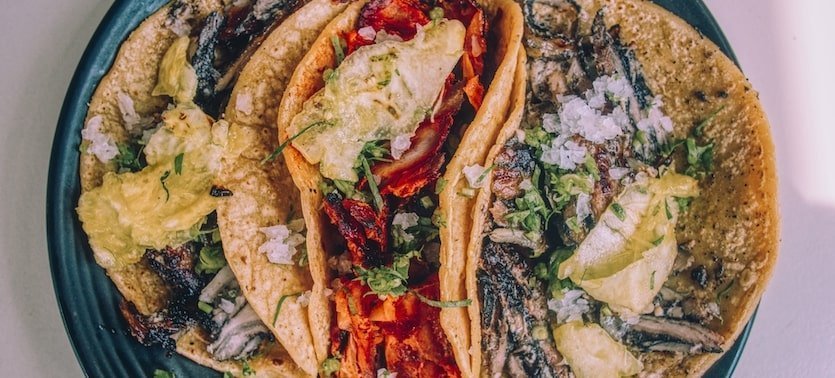

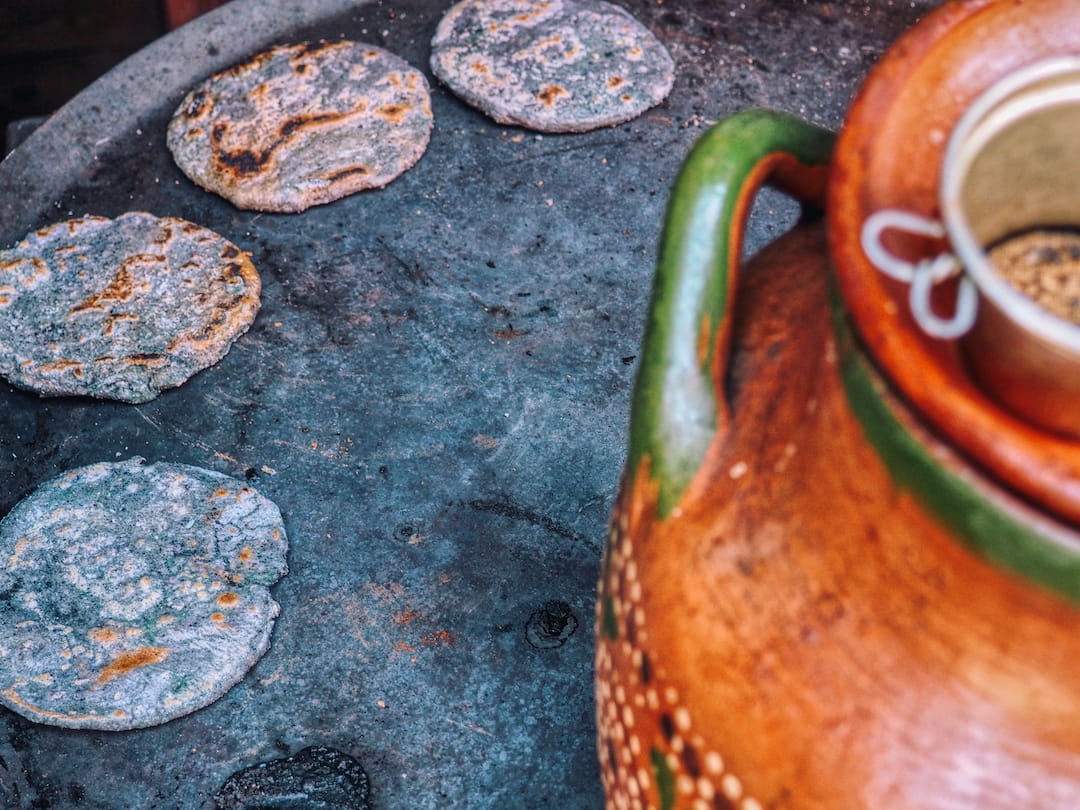

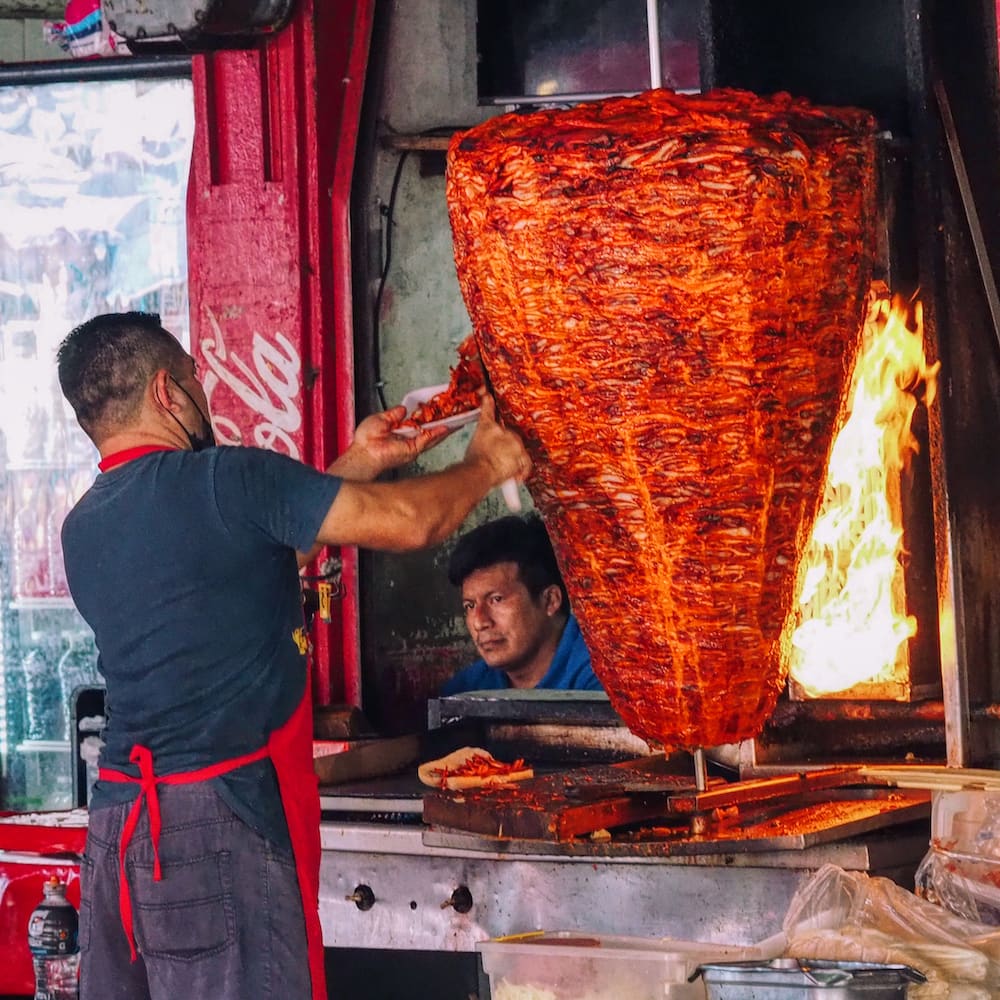
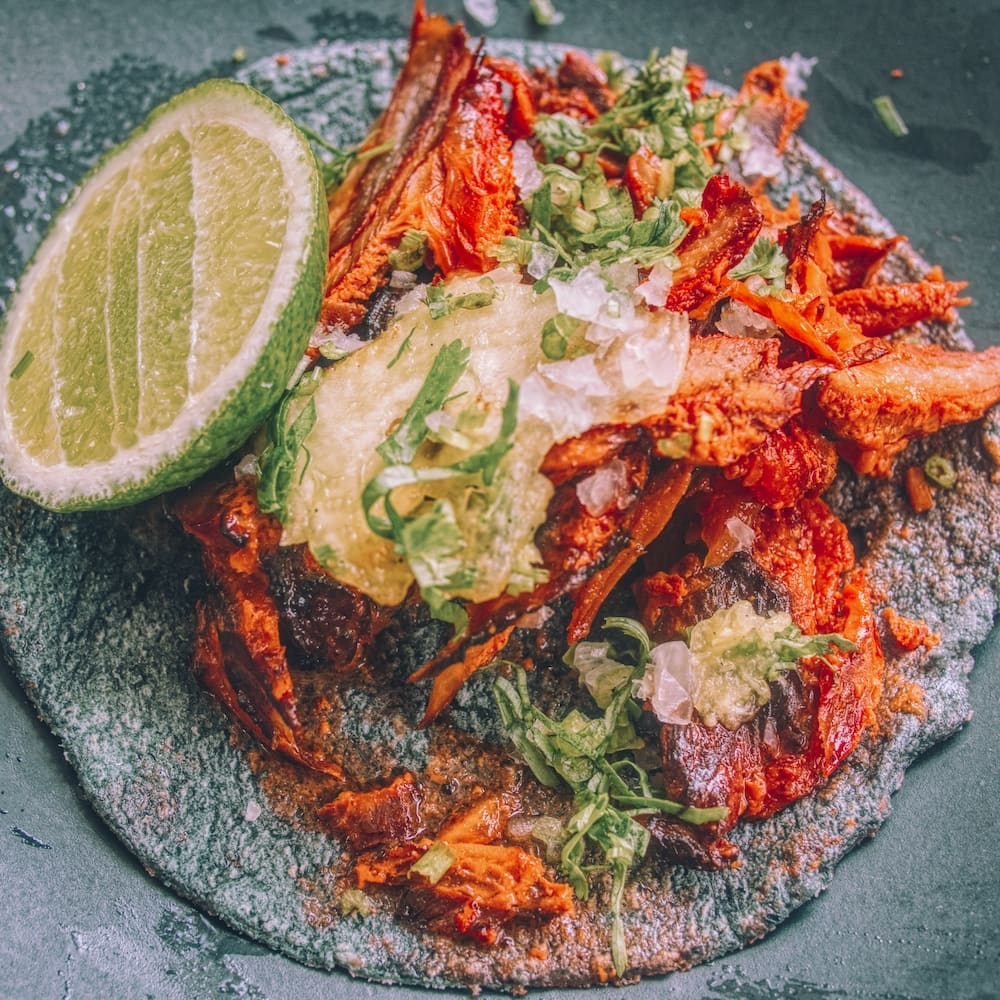



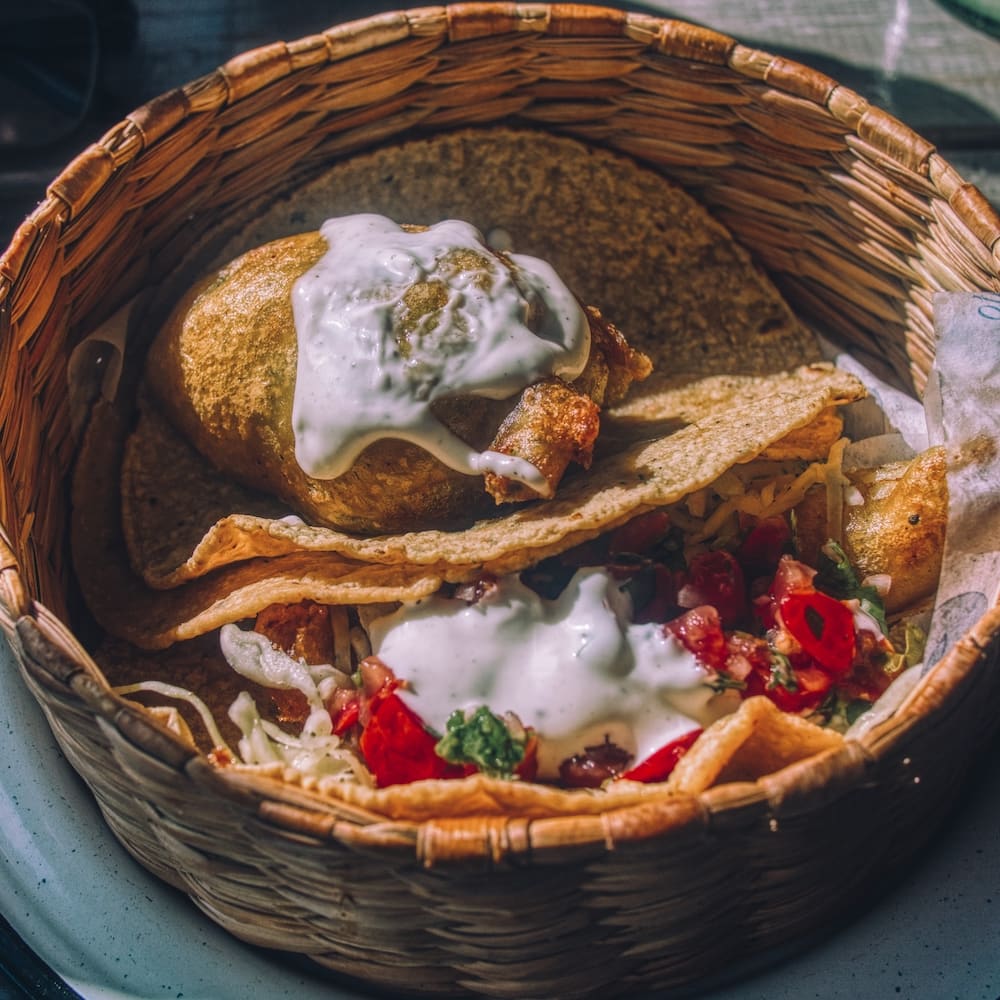
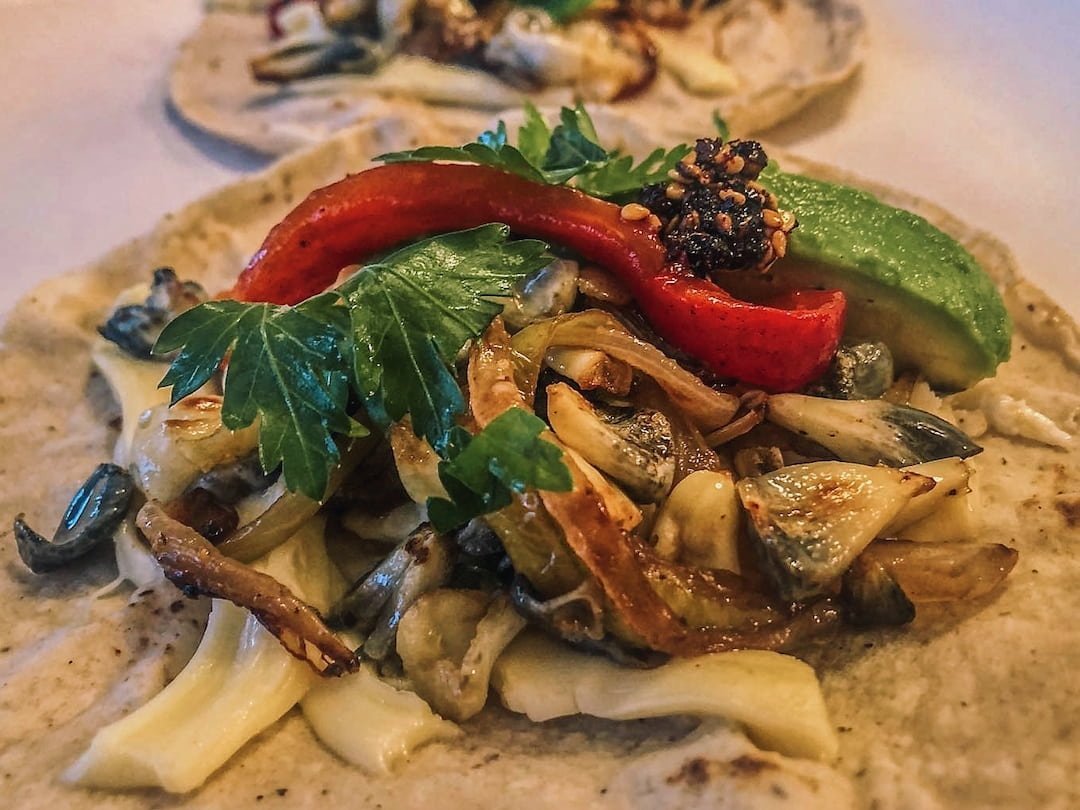
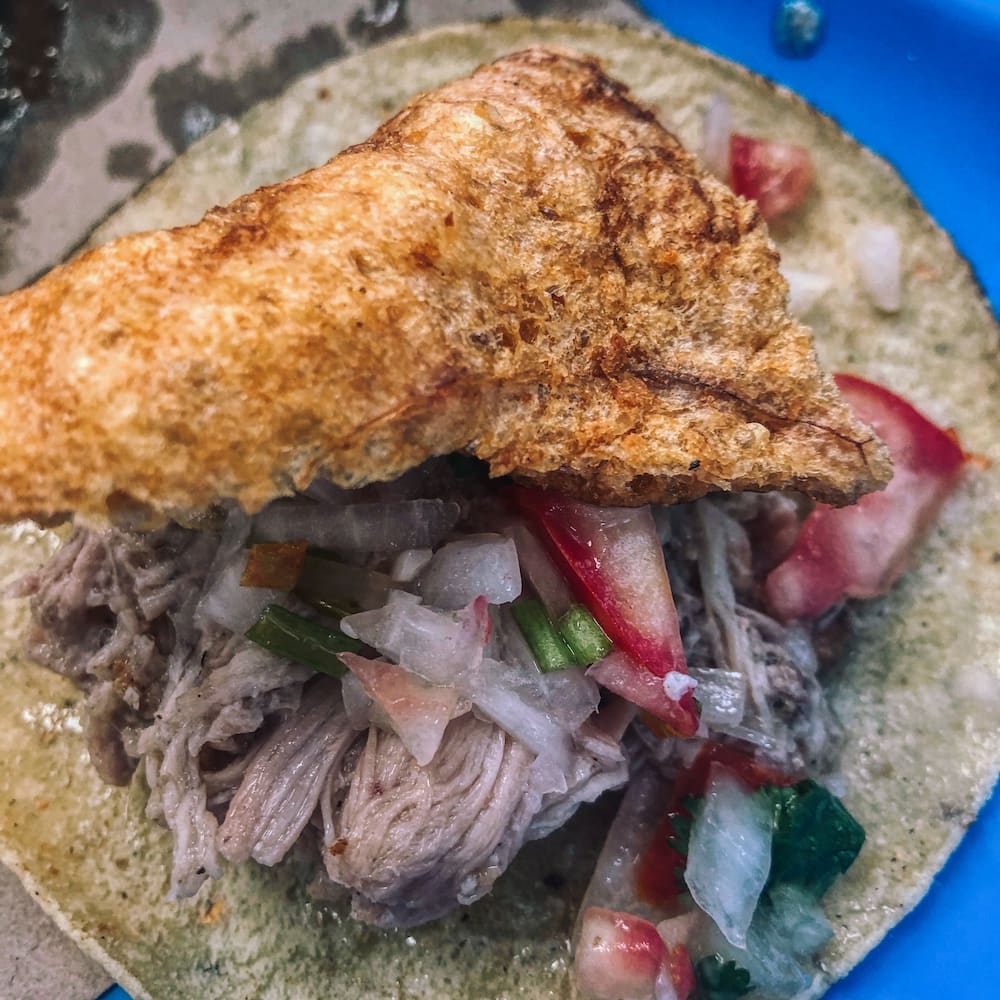



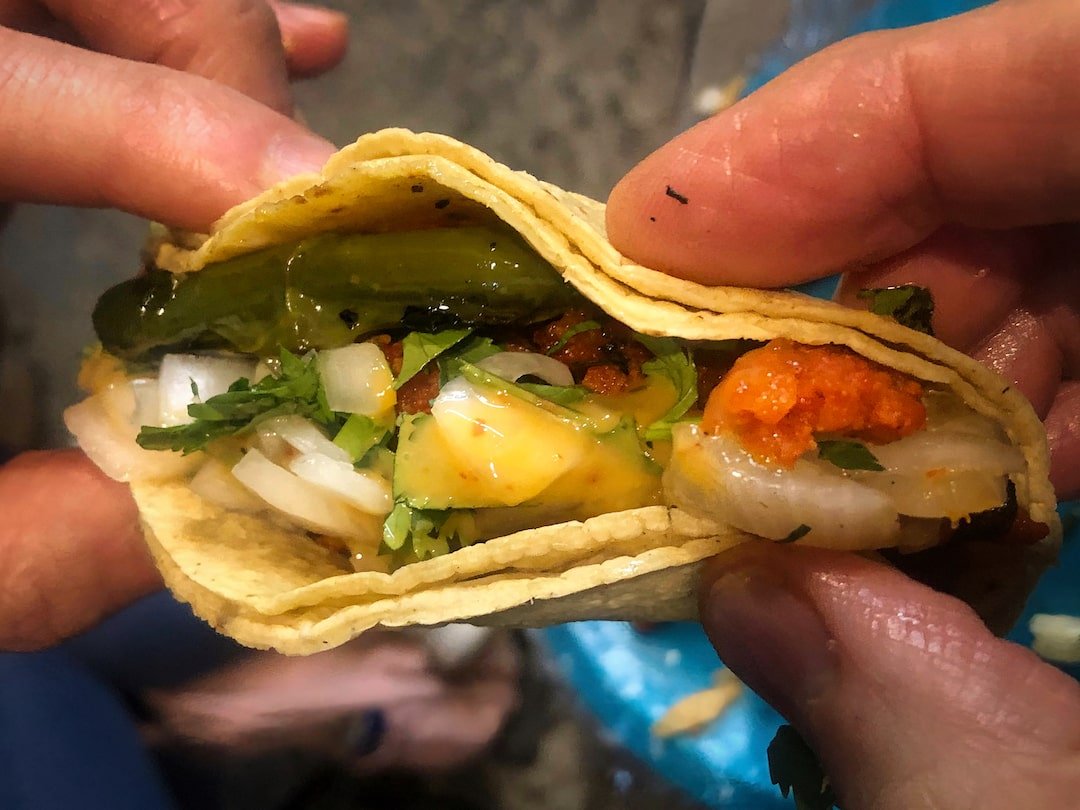
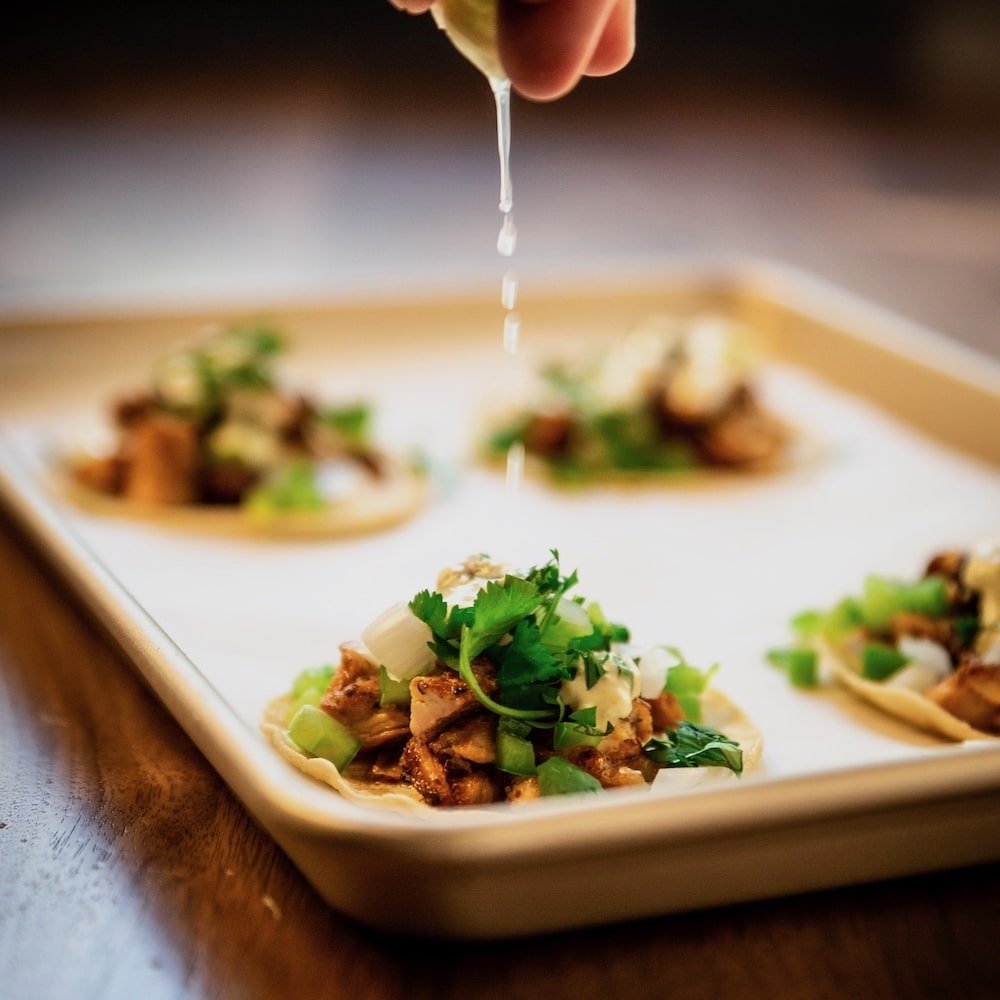




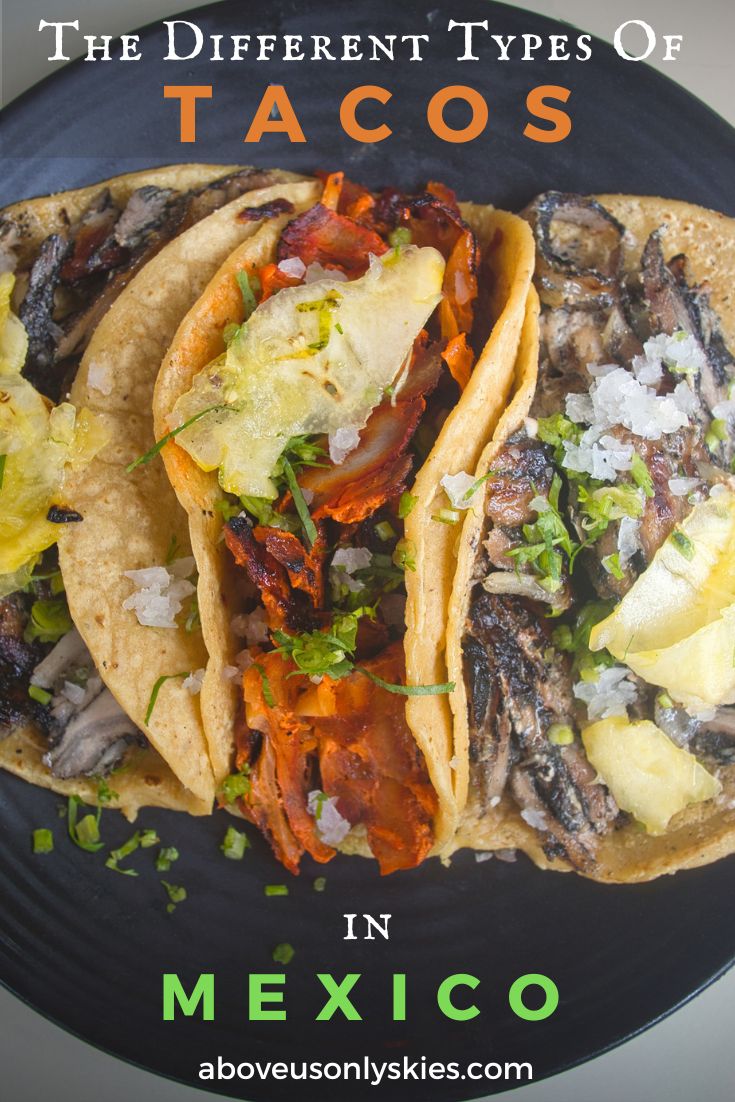


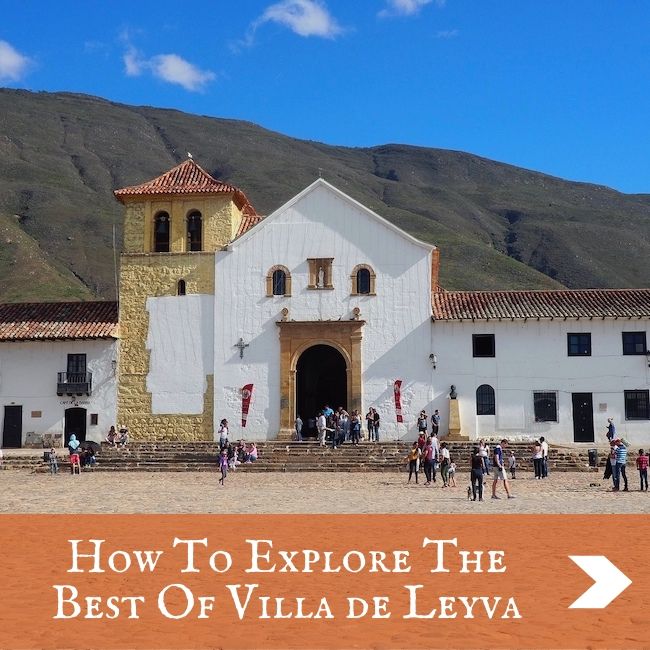



Thanks for this terrific, comprehensive guide to tacos!
I found it interesting when I first discovered that tacos in Mexico are often served on two thin corn tortillas. Do you know if that’s regional?
Did you explore tortas at all? We love the ahogada; filled with your meat of choice, smothered in fiery red sauce, and topped with pickled red onion and avo.
I’ve given up ordering al pastor outside of Mexico. It’s always a disappointing stewed meat concoction. If there is no gorgeous tower of meat, don’t bother.
Thanks, Linda – glad you enjoyed it!
Yeh, the two tortilla thing seems to turn up randomly wherever we’ve been. I initially worked on the assumption they knew I was a novice and so the extra tortilla was useful to mop up any spillages. And I haven’t found a better explanation for it since!
We did go for the occasional torta, too. The best one I had was a “guacamaya” in Guanajuata – similar to the ahogada filling but absolutely stuffed with chopped pork and chicharron.